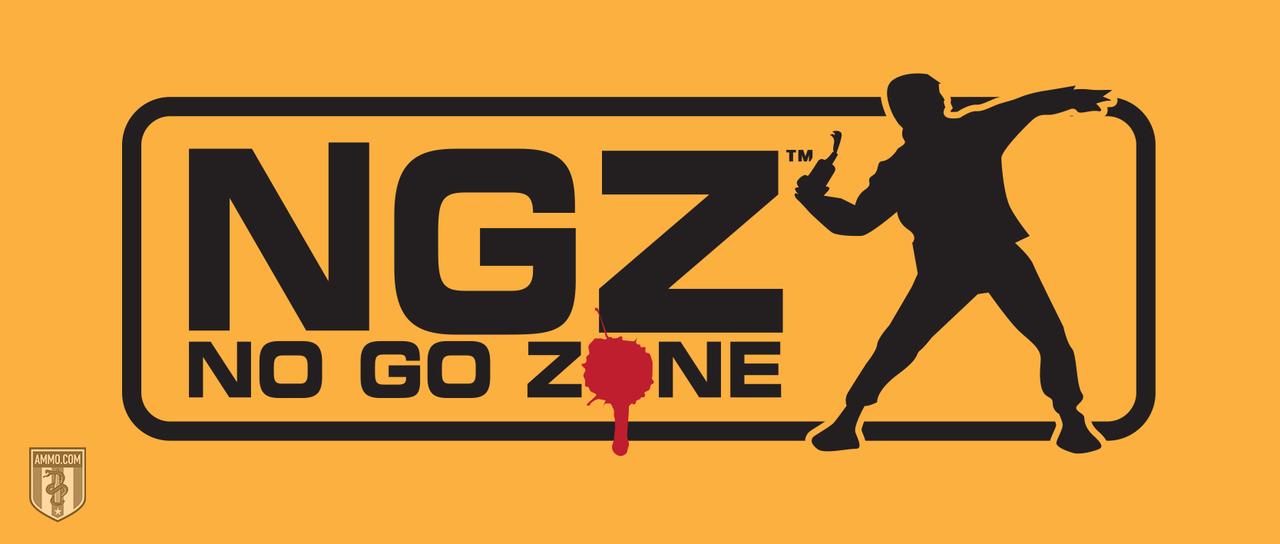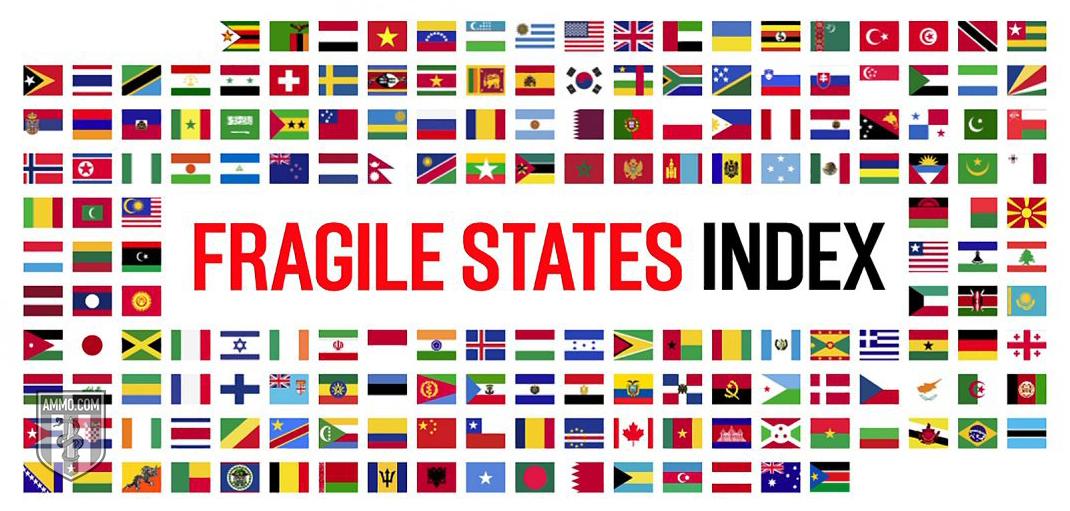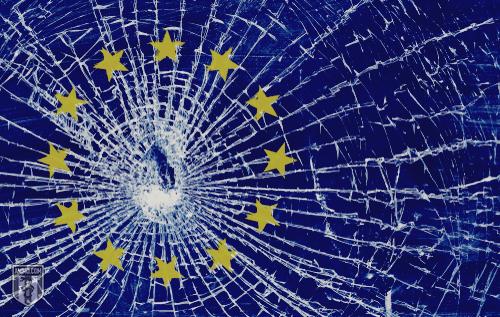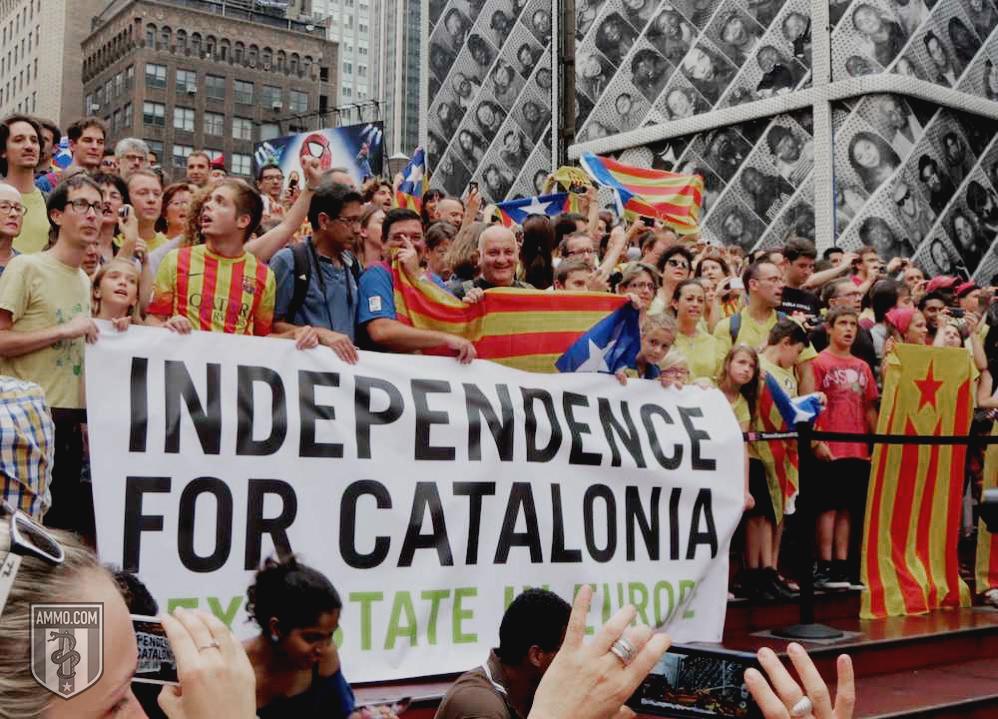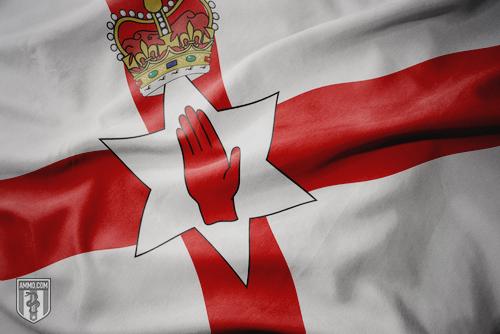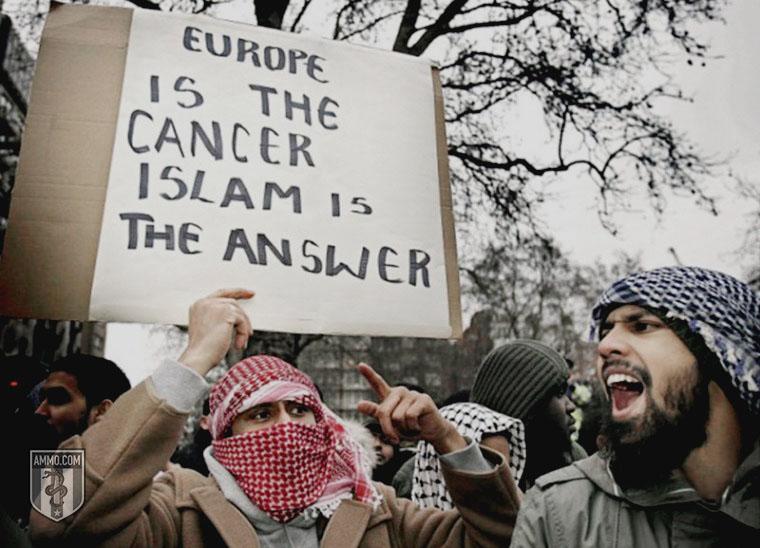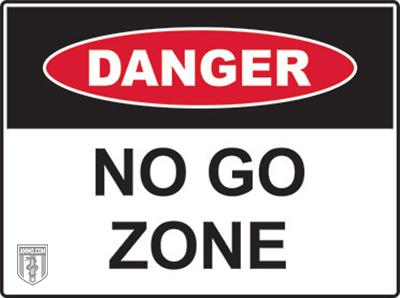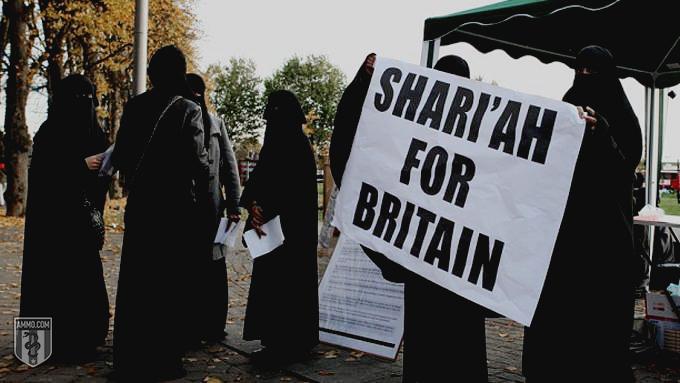Authored by Sam Jacobs via Ammo.com,
The failed state is to post-modernity what the nation-state was to modernity. It’s a recent development that is a hallmark of our age – like a state, but incapable of exercising sovereignty over all of its nominal territory. And while it might sound a little far-fetched, the failed state isn’t just coming to the West. It might already be here.
What Is a Failed State?
A failed state is a state no longer exercising effective control over the whole of its nominal territory. This can take a number of forms in practice, such as:
A de facto separatist nation or nations existing within the boundaries of their de jure territory, competing for the monopoly on legitimate use of physical force.
Failure of the legitimate authority of the nation to make practical, collective decisions.
Inability to adequately provide basic social services such as policing, firefighting or emergency medical services to some or all of its territory.
Inability to connect with other states through diplomatic channels; a lack of participation in the international community.
A central government incapable of collecting enough tax revenue to operate effectively.
One or several of these factors can be present in a failed state. Once a state is “failed,” this often means widespread crime, corruption and outsized influence by non-state actors.
Who Decides If a State Is “Failed?”
You and anyone else can have an opinion on whether or not a state is failed. Politicians have less leeway, as calling a state “failed” can result in serious geopolitical consequences. As a result, most politicians would be hesitant to describe any state as “failed.”
The “Fragile States Index” (FSI) is calculated by the U.S.-based think tank Fund for Peace. They use a number of objective and subjective factors to determine whether or not a state is failed (or “fragile” as they call it) by scanning media for indicators of social, economic and political failure or fragility in a country.
Among the top-ten most fragile states include: South Sudan, Somalia, Yemen, Afghanistan, and Zimbabwe. Haiti is the first representative from the Western Hemisphere at number 12. The next appearance in the Americas is Venezuela at 46, followed by Colombia at 71. Of the 10 most stable countries, eight are in Europe (Finland, Norway and Switzerland get the gold, silver and bronze respectively) and two are in Oceania (unsurprisingly, Australia and New Zealand). The most stable non-Western country is Singapore at 161, followed by Japan at 158 and Mauritius at 151.
The FSI does not hold a monopoly on deciding what nations are and are not “failed.” It is, however, the only major organization ranking countries.
Most people under 40 were probably introduced to the concept of a “failed state” by Somalia, after the collapse of its dictatorship in the early 1990s. This led to an extended American adventure in Somalia, resulting in the events described in Black Hawk Down: A Story of Modern War. Not only were American lives lost, but so was a significant amount of American prestige, as Washington neocons got their first bitter taste of “nation-building” in a nation which didn’t want to be built. The central government collapsed and nothing effectively replaced it.
To this day, some organizations operating within Somalia claim to be the ruling authority. Others claim to be separate, but completely legitimate nations. And those who must do business in Somali waters arm themselves via floating barges filled with guns and ammunition to fight off pirates.
Are Failed States Coming to Europe?
As with most things, the answer to this question depends on how we define “failed state.” For example, the presence of terrorism within a state doesn’t necessarily make it a failure, but rampant terrorism is a signature feature of a failed state. No one would suggest that the 9/11 attacks on America make it a failed state. However, the constant terrorist attacks against the Afghan state might be an argument in favor of Afghanistan as a failed state.
A more useful concept in terms of understanding whether or not failed states are coming to Europe is the so-called “No Go Zone.” United States President Donald Trump made headlines when he suggested that Sweden was on the verge of civil war or collapse. The press quickly lambasted him. How could this possibly be true of a country ranking in the top ten most stable countries in the world?
There are two answers to this question: First, the Fragile States Index measures how failed a state is, not how likely it is to become a failed state in the near future. Second, the manner by which Sweden might become a failed state could be something completely novel – and why wouldn’t it be, as Sweden would be the first failed state in Western Europe?
Yugoslavia might be the model for this. Remember, Yugoslavia was a stable nation until it wasn’t. It then turned into a bloodbath that defined a generation. While it’s tempting to blame this on Communist rule, nowhere else in Europe has there been similar levels of bloodshed. Other multinational Communist states such as Czechoslovakia and the Soviet Union broke apart with very little fuss and almost no spilled blood.
What Are European Secessionist Movements?
A little-known story about 21st-century Europe is that it’s filled with secessionist movements. Catalonia, a region currently part of Spain, made headlines when it voted overwhelmingly to declare independence.
In fact, there are dozens of secessionist movements in Western Europe operating at any given time. Some are more serious than others. For example, Catalonia voted decisively to leave Spain, which led to a constitutional crisis. Scotland came pretty close to voting to leave the United Kingdom. Some other active secessionist movements in Western Europe include:
Belgium: It’s been joked that Belgium is made up of six million Walloons, three million Flemish and one Belgian – the monarch. The country is largely an artificial marriage between a Dutch and French population, with little in the way of shared cultural heritage that was engineered by the British due to its strategic location.
France: France is filled with secessionist movements, many of which it shares with Spain, due to their proximity and shared history. The Basque Country, French Catalonia and the Celtic region of Brittany all have thriving independence movements. So does the Southern Occitan region, the island of Corsica and the formerly Italian territory of Savoy.
Germany: Even stable, sensible Germany has a secessionist movement. The southern, conservative and Catholic region of Bavaria has never comfortably fit into the nation of Germany. Indeed, prior to the formation of a unified Germany, Bavaria was closer to Austria. After World War I, several proposals were made to create a nation out of Austria and Bavaria. A number of other movements seek autonomy for regions within Germany.
Italy: Much like Germany, Italy was not a unified nation until relatively late in modern European history. And, much like France, it’s never quite integrated all of its parts into a whole. Venice, South Tyrol, Sicily, Sardinia, Northern Italy (known as “Padania”), Southern Italy (known as “Ausonia”) and Lombardy are just some of the regions of Italy with active secessionist movements. Of these, Northern Italy’s is the most robust. The Lega Nord (League of the North) is in a ruling coalition with the Five Star Movement.
Spain: The Catalonian independence is the most famous, but not the only independence movement in Spain. There’s the Basques, Andalusia, Aragon, Asturias, Castille, Galicia, Leon, Navarre and Valencia. Spain is comprised of autonomous regions, nearly all of which were once independent kingdoms. Virtually all of them have independence movements of varying relevance and strength.
Switzerland: Despite being a federation of largely autonomous cantons, Switzerland has secessionist movements in at least two: Jura (a French-speaking canton) and Ticino (an Italian-speaking canton).
United Kingdom: The United Kingdom has seen an uptick in secessionist movements since the Scottish independence movement gathered steam. Of course there’s also an independence movement for Wales and even Ulster. No, we don’t mean Irish in Ulster who want to be reunified. The Ulster independence is an ultra-British movement that sees London as having sold out Irish Protestants. Other independence movements in the UK include one for Cornwall, Shetland (which might seek union with Norway), Mercia, Yorkshire and – wait for it – England. Some in England resent that Scots can vote to decide policy in England, while the Scottish Parliament controls Scotland. This is known as the West Lothian question.
If any of these secessionist movements gains enough traction to break apart a Western European nation state, that could result in civil war and failed states without help from any other factors.
What Are Irredentist Movements?
A similar phenomenon is irredentist movements in Europe. Irredentist movements seek to reunite external territories with their “home nation.” The most famous example in Western media is probably “Greater Serbia,” which was the goal of Serbian ultranationalists in the rump Yugoslavia during the Yugoslav wars.
While these are more common in the Balkans than probably anywhere else in the world, Western Europe has no shortage of irredentist movements including:
South Tyrol: Mentioned above, South Tyrol is a part of Italy seeking either independence or union with Austria. Nationalists in Austria likewise seek to reclaim South Tyrol, which was part of Austria for centuries.
Ireland: The government of Ireland, for its part, still claims that the six counties of Ireland that are a part of the United Kingdom are an occupied part of Ireland.
Portugal: Portugal claims Olivenza, a Spanish border town, as part of an obscure dispute with Spain dating back to the Napoleonic era.
Spain: Spain’s claim on Gibraltar, nominally British territory, is so strong that under the Franco regime “The Ballad of John and Yoko” was banned because of the line “Gibraltar near Spain.”
As stated above, these kinds of disputes are far more common in Eastern Europe, where borders are much newer and much less rigid than they are in the Western half of the country.
What Is a No Go Zone?
A No Go Zone is sort of a failed state in miniature form, and is not that recent of a development. In the strictest sense, a No Go Zone (or ”No Go Area”) is an area that has been barricaded off by military or paramilitary authorities. However, a broader definition has emerged in recent years as governments such as France and Sweden use euphemisms such as “vulnerable area,” “exposed area” or “sensitive urban zone” for what are effectively No Go Zones.
For our purposes, a No Go Zone is anywhere that the government is incapable of providing basic support services – policing, firefighting and emergency medical services. This is also the common meaning when “No Go Zone” is used in the media.
Uncomfortable for some to consider, it is an undeniable fact that most, if not all, of the No Go Zones in Europe coincide with large Muslim populations. In these areas, large radicalized immigrant populations are indifferent or hostile to the central government.
Beyond the merely uncomfortable for some and into the deeply disturbing for all, second-generation Muslim immigrants tend to be more radicalized than their parents, not less. This is true across Europe. Second-generation Muslim immigrants have been behind nearly every terrorist attack in Europe post-9/11. The kind of assimilation America saw after its massive immigration wave between the Civil War and the First World War simply is not happening with Muslim immigrant communities in Europe.
No Go Zones in Europe
Much of the debate around whether or not Europe has “No Go Zones” comes down to how terms are defined. A 2017 article on RT’s website put the matter very succinctly:
“Thus those looking to dismiss no-go areas as a ‘myth,’ can argue the semantics of what constitutes a ‘no-go zone,’ or how much of a threat they present, but not that term represents a real phenomenon.”
Here are some examples of growing civil unrest in Europe:
Belgium: Following the November 2015 terror attacks in France, Belgium’s Home Affairs Minister Jan Jambon stated that the Belgian government does not “have control of the situation in Molenbeek.” He described this as a “gigantic problem” without actually using the term No Go Zone.
France: Fox News created controversy in 2015 when they declared France had No Go Zones after the Charlie Hebdo shooting. However, looking beyond the hysteria, there’s considerable evidence that France has No Go Zones. In fact, Reuters referred to No Go Zones in Paris in October 2016. In June 2018, the French President Emmanuel Macron gave a speech with repeated euphemistic references to No Go Zones. The National Post, Canada’s paper of record, did an in-depth feature on No Go Zones in 2016. In 2017, an app launched called “No-Go Zone,” allowing the French to report lawless areas to be avoided. So while there may be a reflexive reaction to dismiss reports from Gatestone Institute or Breitbart on French No Go Zones as “right-wing propaganda,” there are no shortage of so-called “mainstream” sources reporting on No Go Zones in France.
Germany: Angela Merkel has spoken about No Go Zones as a “reality” in Germany. In April 2018, the Daily Mail reported on a poll showing that a majority of Germans feared No Go Zones, with over three quarters stating they believed the government should crack down harder on organized crime.
Sweden: Much of the media attention surrounding No Go Zones is centered on Sweden. Despite vehement denials, there is overwhelming evidence of No Go Areas in Sweden, no matter what term one chooses to use. An April 2018 Sputnik report described areas where emergency services cannot enter without significant police support. In 2018, the Prime Minister of Sweden referred to “parallel societies” in Sweden. The spectre of civil war in Sweden is openly discussed in Parliament. A 2017 RT article quoted Swedish National Police Commissioner Dan Eliasson as saying “we cannot continue in this direction ten more years.” In December 2017, the nation’s chief prosecutor described a Stockholm suburb as being like “a war zone” and stating that she would look to countries like El Salvador and Colombia for potential strategies.
United Kingdom: President Donald Trump was ridiculed for suggesting the presence of No Go Areas in the UK, however, there is evidence to suggest he was correct. Raheem Kassam, a UKIP activist and former Breitbart UK Editor in Chief has written an entire book on the subject. Kassam is of Tanzanian extraction and was raised as an Ismaili Muslim, though he now identifies as an atheist. An anonymous London police officer went on popular British radio program LBC and stated that the British capital did in fact have “No Go Areas.” Councillors for Leeds suburb Bradford have similarly described areas of that city.
How Is the Specter of No Go Zones Influencing European Politics?
No Go Zones are not currently dominating political discourse in any European country. They are, however, forming a persistent backdrop in nearly every European nation. Populist-nationalist parties use them as a frequent talking point to pillory the establishment parties of both the left and the right. For their part, establishment political parties tend to deny the existence of No Go Zones entirely. To what degree No Go Zones are a factor in anyone’s vote is highly speculative.
In the middle of summer 2018, riots broke out in Sweden. Many on the left blamed the riots on the popularity of Sweden Democrats, an anti-immigration populist party. This only seemed to bolster their support among Swedes. Moderate Party MP Hanif Bali denied that this was the cause of the riots. Bali, the son of immigrants, is a staunch critic of Sweden’s immigration policies, showing that these criticisms are not limited to the Sweden Democrats. Bali is the only Swedish politician of note within the more mainstream parties to state that he is open to the possibility of a coalition with Sweden Democrats.
How Likely Are No Go Zones to Result in Failed States?
This is a difficult question to answer, because there’s no history of pockets of No Go Zones metastasizing into failed states in Western Europe.
However, some Western European countries have hallmarks of incipient failed states, such as:
Ceding their monopoly on legitimate violence. Sharia courts, for example, operate with relative impunity in the UK.
An unwillingness or inability to exercise sovereignty over its territory. The extended rioting in France and Sweden’s No Go Zones provide an example of this.
Escalation of communal or tribal conflicts. As No Go Zones grow, it’s almost a given that communal conflicts will escalate.
Guerilla conflict. Similarly, as No Go Zones grow, they may come to resemble completely autonomous areas and bases for terrorist attacks, such as the Moro areas of the Philippines.
Finally, there’s the specter of democratic collapse in Western Europe. What will happen, for example, if the Sweden Democrats win a plurality in parliament, but cannot form a government and neither can any collection of their rivals? How about if sections of the military or security apparatus start taking sides?
How Can I Protect My Family From No Go Zones?
The short answer is by not living near any. The problem with being “prepared” for No Go Zones and failed states is that even the most prepared people in these areas lead somewhat desperate qualities of life. Even all the tactical weapons and gear in the world won’t make living in what’s effectively a war zone any prettier.
Still, the last 30 years of European history teaches us that No Go Zones and failed states can crop up anywhere. Preparation should be focused on having adequate ammunition, water, food and power in the event of a disruption of normal civil society. More than anything, what you need is not supplies, but an escape plan.

